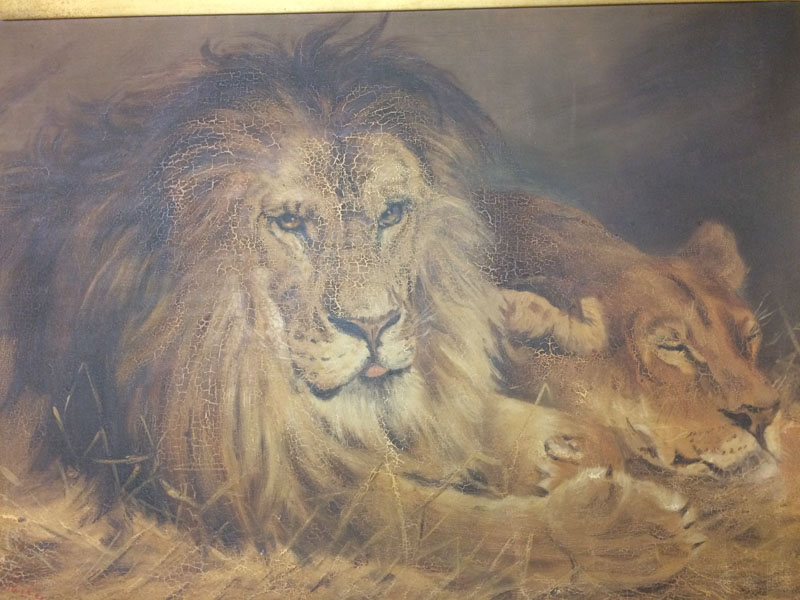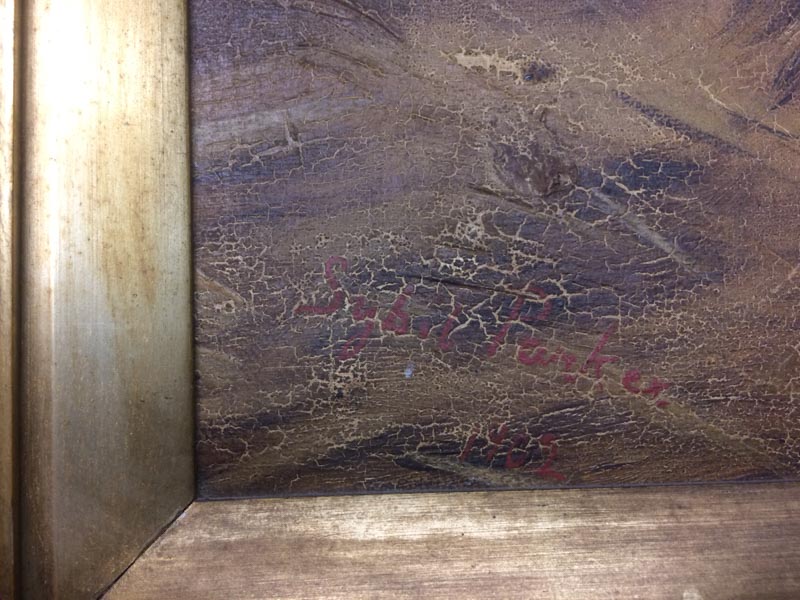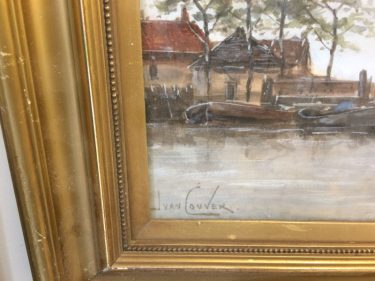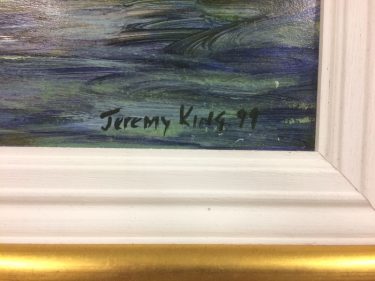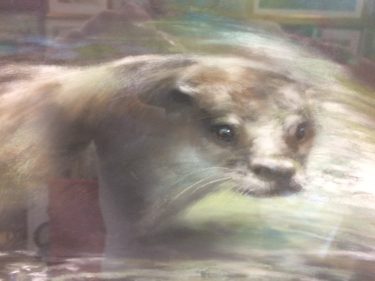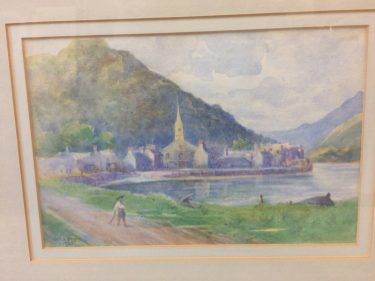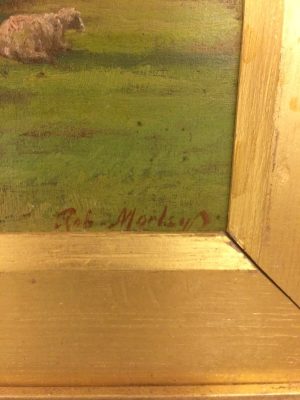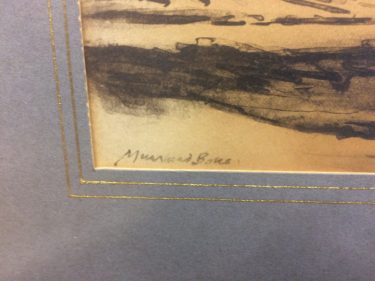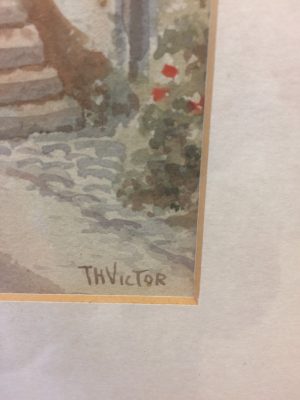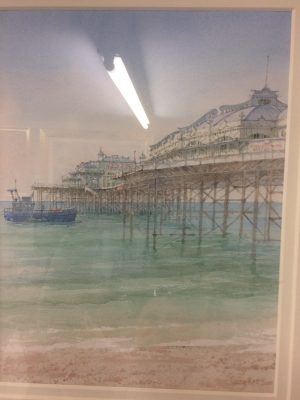Description
A majestic Edwardian oil on canvas of a pair of lions at rest on a straw bed, painted in 1902 by Sybil Parker, as a copy of an original painting by the world famous Victorian British wildlife artist, Sir Edwin Henry Landseer RA. It is believed that this lion’s face was possibly the one that Landseer used for his sculptured lions in Trafalgar Square. The detail in the lion’s mane and face is stunning. It has clearly been hung over a fireplace or other heat source and consequently it had dried out and cracked, this has painting has now been fully cleaned and refurbished and is back to its former glory. The value of Sybil Parker’s work is very varied so we have priced this fantastic painting at a low price. It comes in a period gilt frame which measures 87 x 65 cm and the painting itself measures 72 x 52 cm.
Sybil Parker
The following is an extract fro a newspaper article featuring this very painting…
King of The Jungle cast in Bronze.
Unusually for me I am writing about an artist who didn’t paint the painting under discussion this week…All will become clear as you read on…Hopefully!
Sir Edwin Landseer was one of our most famous Victorian artists. He was revered by the whole country and most people will know at least one of his major works very well indeed (more of that later). Landseer was born in London in March 1802. His father was the renowned engraver John Landseer ARA. The young Landseer was something of a prodigy who went to the Royal Academy Schools in London and by the very early age of only 13 was already exhibiting at The Royal Academy. Incredibly he was elected as an Associate of The RA at the age of only 24 and became a full Academician five years later in 1831. He was knighted by Queen Victoria in 1850.
Landseer was an incredibly talented painter and all sorts of stories surrounded his life and works. For example, it is said that he could paint a picture with both hands at the same time i.e. his right hand painting the horse’s head whilst his left hand was painting the horse’s tail! He was also able to paint extremely quickly, baffling other notable artists of his time with his speed and dexterity.
Landseer was the best painter of animals of his time, his popularity went across the classes with so many of his paintings being engraved by his brother Thomas, giving access to his stunning workmanship to the masses. Most people in Victorian Britain would have had a “Landseer” hanging somewhere in their home. Queen Victoria herself commissioned Landseer to paint her animals and family for her many times including a painting of herself that she gave to her beloved Prince Albert as a gift a year prior to their wedding.
He has been attributed as the source of the myth that St Bernard mountain rescue dogs carry small barrels of brandy around their necks. This comes from a painting of 1820 “Alpine Mastiffs Reanimating a Distressed Traveller”. He also painted the very famous painting of a proud stag in the Scottish Highlands entitled “Monarch of The Glen”. But the works of his that really everybody will know, almost without exception, are the four lions at the base of Nelson’s Column in Trafalgar Square. Landseer was commissioned to sculpt these beautiful bronzes by The British Government in 1858. They were completed and installed in 1867. When Landseer died in 1873 shops and houses all around the country lowered their blinds or hung flags in their windows as a mark of respect. He was buried in St Pauls Cathedral.
Now onto todays painting, which is a copy of one of his paintings of lions, which may have been used for a template for the faces of the lions in Trafalgar Square. It was painted in 1902 by Sybil Parker, a student artist at the time who went onto become a well-respected artist in her own right. This painting had hung for years over a fireplace and had suffered some heat and soot damage but has been fully restored and now looks as good as the day it was painted. It is a very faithful copy of the original and is an oil on canvas in a very ornate gilded frame.

